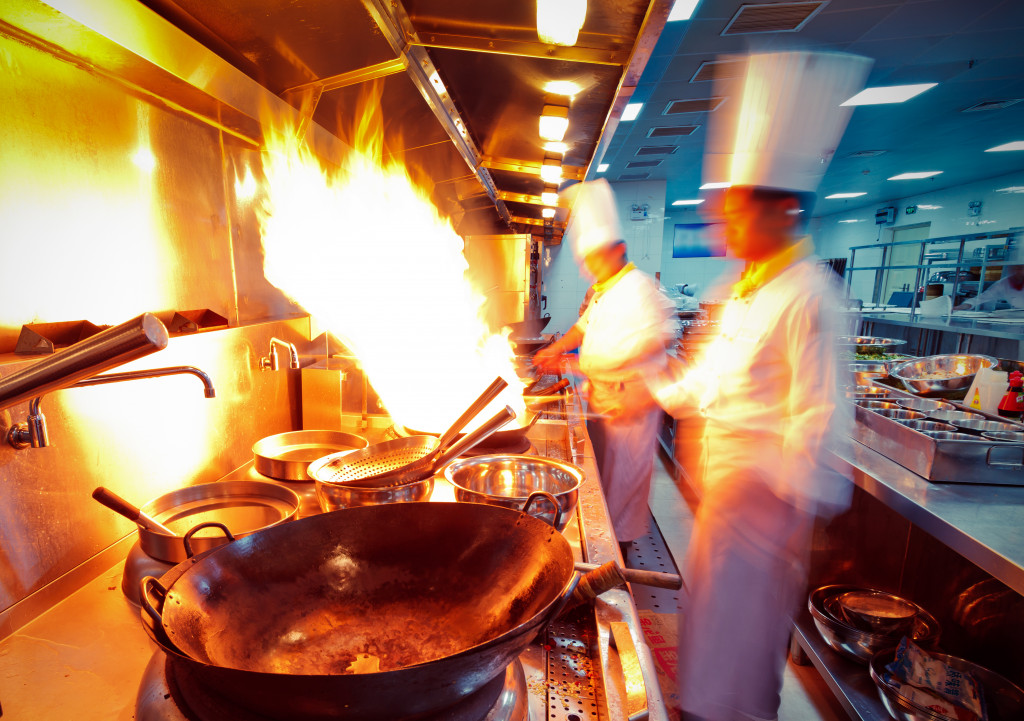
- Designing an efficient commercial kitchen is essential for any successful restaurant, considering space, equipment placement, ventilation system, and lighting.
- Sanitation is critical for promoting food safety and quality, establishing cleaning schedules, and regular inspections.
- Storage solutions help to maintain freshness and temperature control while minimizing waste.
- Invest in a high-quality ventilation system to reduce airborne contaminants and maintain a safe environment.
- Automated storage systems can save labor costs while monitoring inventory and temperature levels.
Building a commercial kitchen is one of the most critical steps in starting and running a successful restaurant. Not only does it provide the necessary space for cooking and storing food, but it also serves as an environment for developing culinary creativity and quality control.
Having a well-designed commercial kitchen helps to ensure that all of the ingredients used are fresh, safe, and of the highest quality. Restaurant owners will have access to all the necessary equipment to prepare meals quickly and with minimal waste. This ensures customer satisfaction and can help save money on food costs in the long run.
Investing in a high-quality commercial kitchen is essential for any new restaurant opening. It should be designed to meet local health regulations and safety standards set by industry organizations like the National Fire Protection Association (NFPA) or Occupational Safety and Health Administration (OSHA).
Designing the kitchen layout correctly is critical to any successful restaurant. Planning will take several stages, and here are a few areas to consider when creating the kitchen layout:
Space and Design

Building a commercial kitchen requires careful consideration of space and design. Ensuring that the kitchen layout maximizes efficiency, safety, and food quality while complying with local health regulations is essential. To achieve this, restaurant owners should consider the following factors when designing their space:
Size and Layout
The size of the kitchen should be based on the restaurant’s menu offerings. Different equipment will require different amounts of space. Consider also how to arrange equipment and staff in an efficient workflow.
Equipment Placement
Optimize storage and workflows by placing large equipment, such as ovens and refrigerators, together in one area. In contrast, smaller equipment, such as prep tables, can be placed closer to workstations for easy access.
Ventilation System
Proper ventilation is essential for any commercial kitchen. This helps reduce airborne contaminants like smoke, grease, and odors from cooking, which can create a health hazard in the workplace. A high-quality ventilation system is critical to maintaining a safe environment for staff and customers.
Lighting
Adequate lighting helps improve visibility in the kitchen and ensures safety when handling ingredients or operating machinery. Natural light from windows works best if available; however, artificial lighting can supplement natural light sources or provide illumination at night.
Sanitation
Sanitation is critical for any commercial kitchen, as it helps ensure food is prepared safely and hygienically. Not only does it prevent the spread of foodborne illnesses, but it also helps maintain the quality of ingredients used. A well-sanitized commercial kitchen can give customers peace of mind and build trust in the restaurant’s reputation.
Sanitation can be achieved through proper storage, handling, and preparation of food, regular cleaning of equipment and surfaces, and frequent handwashing among staff. It is important to have stringent policies to ensure these practices are always followed. Establishing cleaning schedules and regular inspections by management or a third-party organization is essential for maintaining a sanitary environment.
Sanitation can also be improved by installing an industrial reverse osmosis water system, which reduces contaminants in water and helps maintain a high standard of cleanliness. You can use filtered water to clean kitchen equipment, ensuring that all surfaces and utensils are bacteria-free.
Storage Solutions

Storage solutions for a commercial kitchen are essential for maintaining the quality of ingredients and ensuring safety standards are met. Not only do they provide space for storing food items and equipment, but they can also help optimize organization and efficiency. When designing the kitchen layout, it is essential to prioritize storage solutions that maximize safety, convenience, and hygiene.
The type of storage solution depends on the size and layout of the kitchen and the restaurant’s menu offerings. For example, a large kitchen may require multiple refrigerators and freezers for storing perishable food items. Smaller kitchens may need only one refrigerator or freezer but enough capacity to store all necessary ingredients. Shelving units can be used to store dry goods or other non-perishable items in an organized manner. Moreover, it is essential to consider how food can be stored safely with minimal contact between raw and cooked foods to prevent cross-contamination.
For added convenience, many restaurants opt for automated storage systems that help reduce labor costs while maintaining food freshness and temperature control. Automated systems can also help minimize waste by tracking inventory levels and ordering new supplies as needed. Additionally, some automated systems come with temperature sensors that alert staff if any cold storage becomes too warm due to power failure or any other problem. It is essential to implement monitoring regularly to ensure all safety protocols are being followed.
Final Thoughts
Building a commercial kitchen for a restaurant is no small task. It requires careful planning and consideration of many factors, such as space, design, equipment placement, ventilation system, lighting, sanitation storage solutions, etc. Investing in these components can help ensure customer satisfaction while adhering to local safety regulations. Any restaurateur can create an efficient and successful commercial kitchen with the right strategies.



